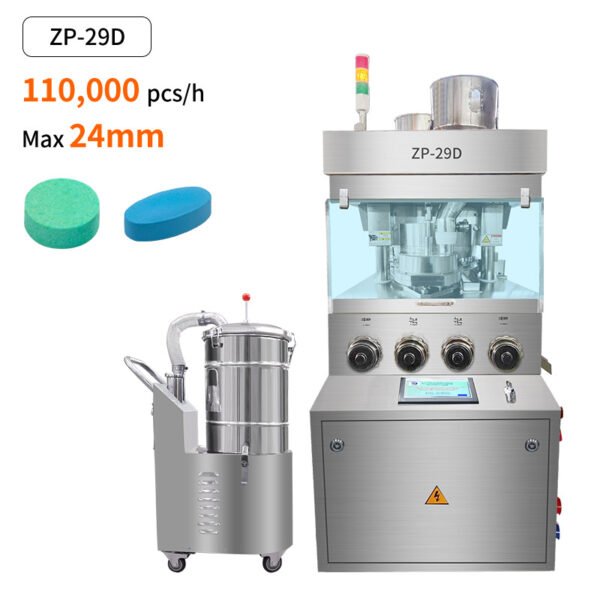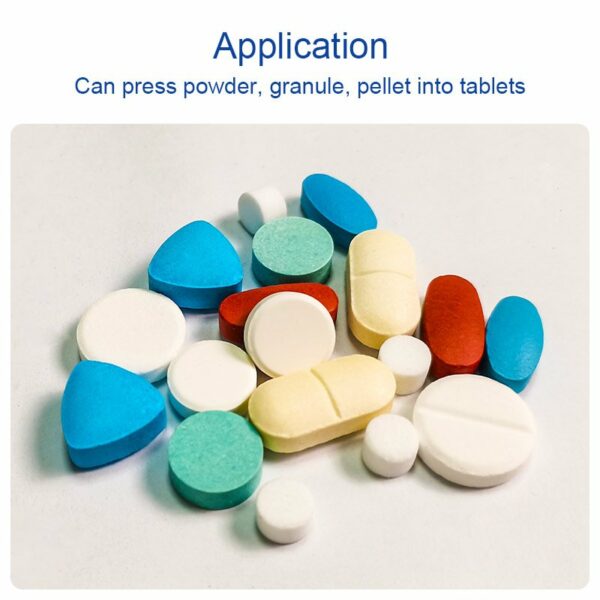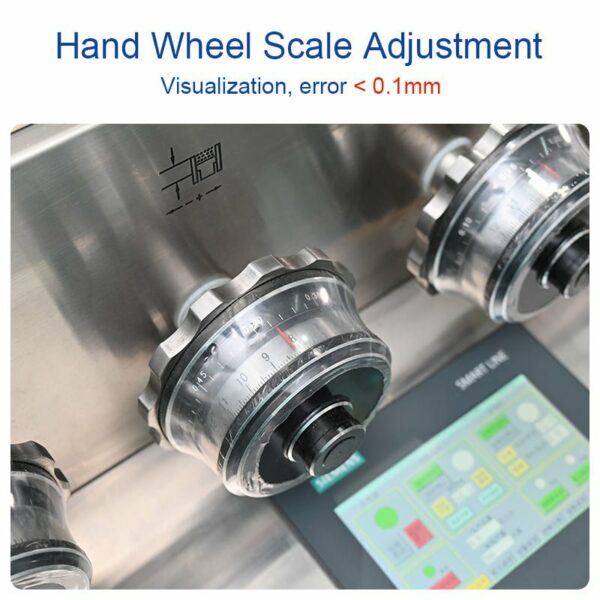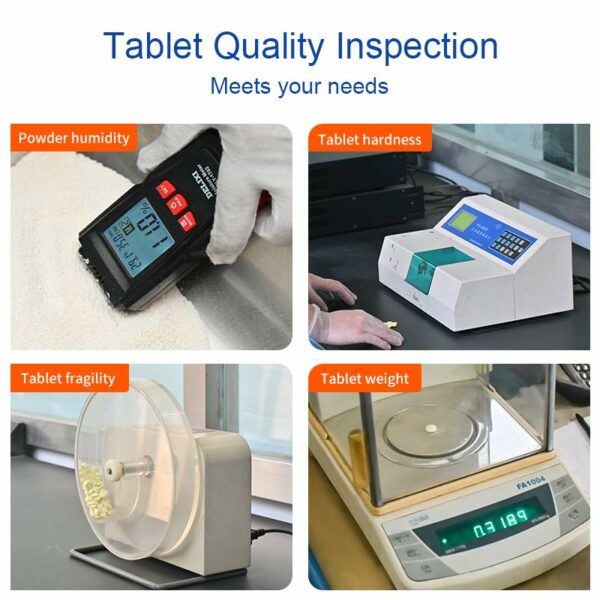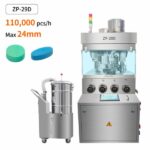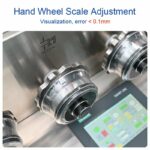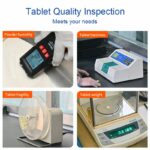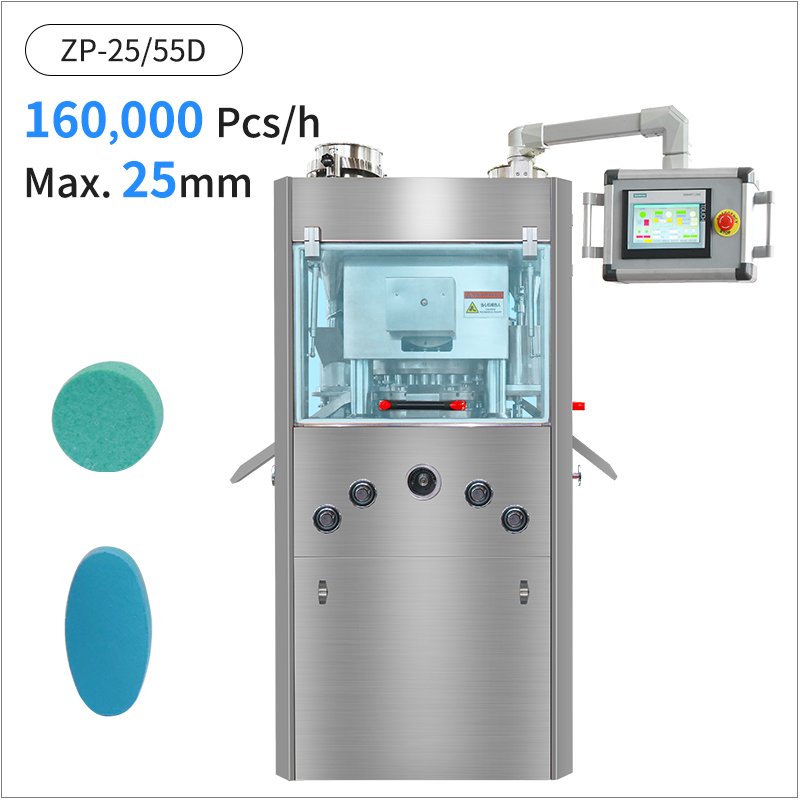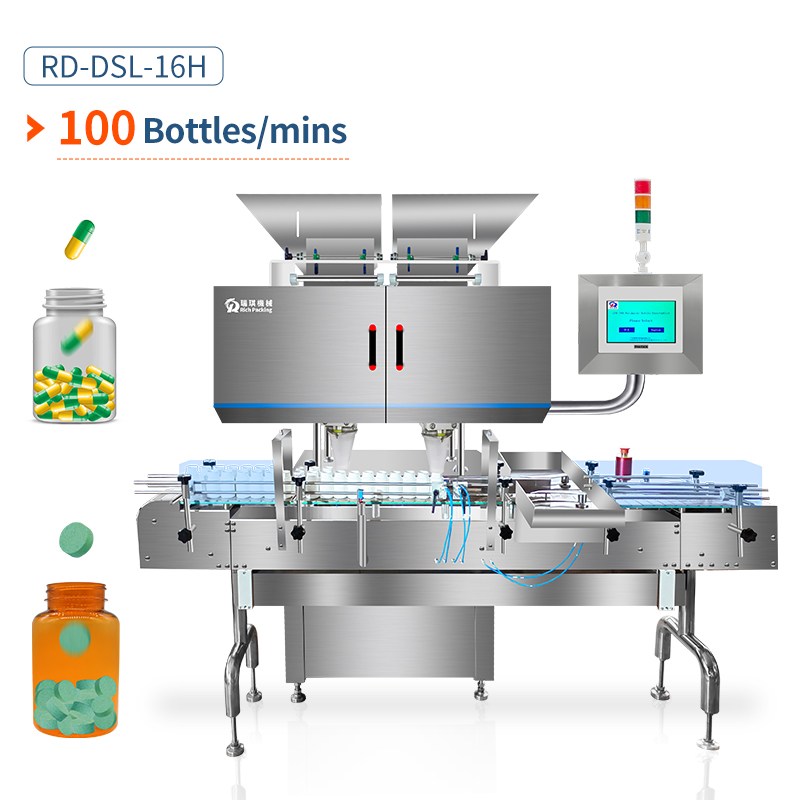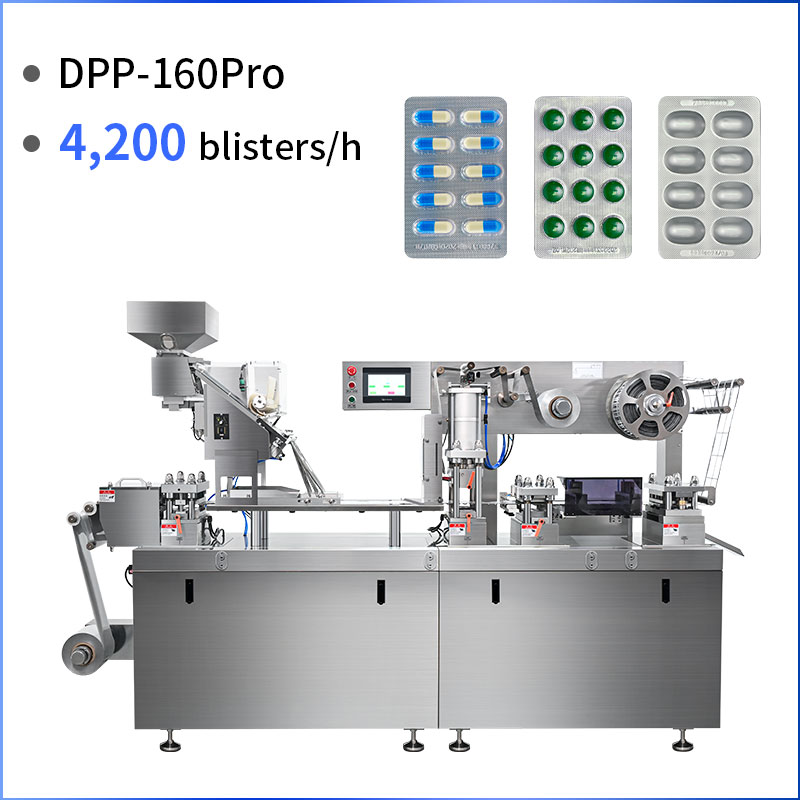Presso Ruidapacking, progettiamo la pressa per compresse ZP-29D per offrire una versatilità senza pari per applicazioni farmaceutiche, nutraceutiche e industriali. Un fattore critico per ottenere una consistenza perfetta delle compresse è selezionare il tipo di stampo giusto. Le nostre opzioni di attrezzatura—stampi D, DD, B e BB—soddisfano diverse esigenze di produzione, garantendo un'efficienza ottimale, sprechi minimi e una qualità superiore delle compresse. Ecco come ciascun tipo di stampo beneficia la tua operazione:
1. Stampi di tipo D: Standardizzazione e efficienza dei costi
Gli stampi di tipo D sono lo standard del settore per la produzione ad alto volume di compresse rotonde comuni (tipicamente con diametro di 5–25 mm). Il loro design universale garantisce compatibilità con la maggior parte delle presse per compresse rotative e attrezzature ausiliarie. I vantaggi includono:
Costi di attrezzatura inferiori: Ampiamente disponibili ed economici per la produzione di routine.
Facilità di manutenzione: La pulizia e la lucidatura semplificate prolungano la vita utile degli stampi.
Cambi rapidi: L'intercambiabilità riduce i tempi di inattività tra i lotti.
Ideale per i produttori che producono grandi lotti di vitamine, analgesici o integratori standard dove la velocità e il controllo dei costi sono priorità.
2. Stampi di tipo DD: Maggiore durata per formulazioni abrasive
Gli stampi di tipo DD presentano specifiche a doppia profondità (DD), con lunghezze di stampo estese e costruzione rinforzata. Questo design eccelle nella lavorazione di miscele di polveri abrasive o corrosive (minerali, miscele effervescenti). Vantaggi chiave:
Vita utile estesa: L'acciaio temprato resiste all'usura da composti abrasivi, riducendo la frequenza di sostituzione.
Stabilità di compressione migliorata: Minimizza la formazione di cappucci/laminazione in formulazioni difficili.
Ridotto rischio di contaminazione: Tolleranze strette prevengono l'accumulo di materiale nei fori degli stampi.
Essenziale per la produzione di compresse con alto contenuto di riempitivi, API o miscele di granuli che richiedono cicli di compressione rigorosi.
3. Stampi di tipo B: Versatilità per forme complesse e piccoli lotti
Gli stampi di tipo B supportano punzoni multi-testa (compresse, ovali o forme personalizzate) e dimensioni di compresse più piccole. Il loro design conforme agli standard europei (ISO 18084) offre flessibilità per R&D o produzione di nicchia:
Geometrie complesse: Consente di realizzare embossing intricati, linee di rottura e forme non rotonde senza compromettere l'integrità strutturale.
Agilità R&D: Perfetto per la prototipazione di nuove formulazioni o produzioni in piccoli lotti.
Riduzione degli sprechi di materiale: L'allineamento di precisione garantisce peso/durezza uniformi nella produzione a basso volume.
Scegli il tipo B per integratori premium, compresse veterinarie o medicina personalizzata che richiedono un branding unico o precisione nella dosatura.
4. Stampi di tipo BB: Prestazioni specializzate per micro-compresse e API ad alta potenza
Gli stampi di tipo BB sono progettati per compresse ultra-piccole (<5 mm) e ingredienti attivi ad alta potenza. Il loro diametro del punzone più piccolo e il sistema di guida migliorato offrono:
Precisione senza pari: Controllo rigoroso sulla profondità di riempimento e compressione per micro-dosaggio.
Minima contaminazione incrociata: Ideale per composti potenti che richiedono protocolli di pulizia rigorosi.
Flusso di polvere ottimizzato: Previene il ponteggio in formulazioni a basso peso.
Critico per farmaci pediatrici, terapie ormonali o micro-compresse effervescenti dove la coerenza del dosaggio è non negoziabile.
Perché scegliere Ruidapacking per le tue esigenze?
Conformità cGMP: Tutte le macchine per compresse soddisfano gli standard USP, UE e ISO per la tracciabilità dei materiali.
Soluzioni personalizzate: Richiedi una macchina su misura per formulazioni appiccicose.
Supporto globale: Debugging e assistenza tecnica in loco a livello globale.
